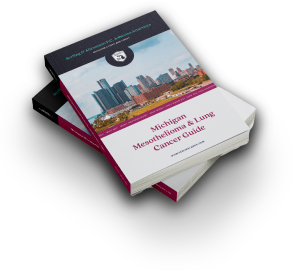The History of Asbestos: From Miracle Material to Public Health Crisis
It’s been definitively proven that asbestos exposure causes lung cancer and mesothelioma in humans. However, this was not immediately apparent — in fact, it took hundreds of years for researchers to link the use of asbestos to these life-threatening diseases. This article delves into the complex history of asbestos, tracing its journey from a prized industrial material to a recognized health hazard, and shows how Serling & Abramson, P.C. fights for justice on behalf of those affected.
Early Use and Recognition of Asbestos
A Material Ahead of Its Time Asbestos has been utilized for centuries, with records dating back to the 15th century. Marco Polo noted its fire-resistant properties and ancient civilizations used it to create burial shrouds and lamp wicks. The Industrial Revolution marked the beginning of widespread asbestos mining and consumption, as the material’s heat resistance and durability made it invaluable in various applications.
Applications for Asbestos By the 19th century, asbestos was a cornerstone of industrialized nations, used in construction materials, textiles, automotive and railroad brakes, and even consumer products like artificial fireplace embers. Types of asbestos, such as chrysotile (white asbestos), tremolite, and anthophyllite, found their way into buildings, steam engines, and insulation products. Asbestos-containing materials became ubiquitous, though concerns about its harmful effects began to surface.
First Connections Between Asbestos and Health Hazards
The Rise of Asbestos-Related Conditions The dangers of asbestos exposure became apparent in the late 19th and early 20th centuries. Workers in asbestos mines and factories began to suffer from respiratory issues. By the 1920s, medical journals were documenting asbestosis, a condition caused by inhalation of asbestos fibers that scar the lungs and impair breathing.
Asbestos and Cancer The first confirmed link between asbestos exposure and lung cancer emerged in the 1930s. Doctors in South Carolina observed an alarming rate of lung cancer among workers at an asbestos textile plant. This connection was further reinforced in the 1940s when the National Cancer Institute officially recognized asbestos as a carcinogen. In the 1960s, Dr. Christopher Wagner’s research established asbestos as a cause of malignant mesotheliomas, including pleural and peritoneal cancers. Wagner also identified secondhand exposure risks in families of asbestos workers and communities near asbestos mines.
Corporate Coverups and Negligence
Ignoring the Dangers Despite mounting evidence, asbestos companies prioritized profits over safety. The infamous Sumner Simpson Papers revealed that in the 1930s and 1940s, corporations actively suppressed research linking asbestos to cancer. Correspondence from executives stated, “The less said about asbestos, the better off we are.” Insurance companies also participated in coverups, obstructing workplace inspections and downplaying health risks.
Military and Industrial Use The U.S. military heavily relied on asbestos during World War II and beyond, especially in shipbuilding. Veterans who served aboard Navy ships or in shipyards faced significant exposure. Tragically, the government failed to inform them of the risks, leaving countless veterans vulnerable to asbestos-related diseases.
Modern Asbestos Usage and Regulation
Global Production and Consumption While developed nations like the United States have implemented bans or strict regulations on asbestos, it remains a major industry in some countries. Russia and Kazakhstan are the largest asbestos producers, mining hundreds of thousands of metric tons annually. China and India are the largest consumers of asbestos in construction materials, automotive brakes, and industrial products. Globally, 125 million workers are exposed to asbestos daily, perpetuating the cycle of asbestos-related diseases.
Efforts to Ban Asbestos In the United States, the Environmental Protection Agency (EPA) and the Consumer Product Safety Commission (CPSC) have issued regulations to limit asbestos use. However, a complete asbestos ban has yet to be achieved, leaving pockets of risk in older buildings and imported products. Disposal of asbestos-containing materials remains a critical public health concern.
Legal Advocacy and Awareness
Litigation Reveals the Truth The rise of asbestos litigation in the 1970s shed light on the full extent of its dangers. Attorneys like Michael B. Serling were at the forefront of these efforts, securing justice for victims and holding corporations accountable. Serling’s victory in Michigan’s first asbestos jury trial marked a turning point in public awareness and legal advocacy.
Serling & Abramson, P.C.: Fighting for Justice Today, Serling & Abramson, P.C. is a leading advocate for asbestos victims. Specializing in asbestos-related lung cancer and mesothelioma cases, the firm has an extensive database of companies and locations tied to asbestos exposure. Their expertise ensures that victims receive the compensation they deserve, covering medical expenses, lost income, and pain and suffering.
The Ongoing Battle Against Asbestos
Health Risks and Public Awareness The inhalation of asbestos fibers continues to pose severe health risks, leading to conditions like asbestosis, pleural mesothelioma, and ovarian cancer. Public health campaigns aim to raise awareness about these dangers, advocating for stricter regulations and safer practices.
The Future of Asbestos Litigation As asbestos-related diseases have long latency periods, cases will continue to emerge for decades. Legal firms like Serling & Abramson, P.C. play a critical role in ensuring accountability and justice for victims, advocating for policy changes, and supporting affected communities.
Conclusion of the History of Asbestos
The history of asbestos is a cautionary tale of corporate negligence and public health crises. From its origins as a miracle material to its recognition as a lethal carcinogen, asbestos has left an indelible mark on human history. Despite progress in regulations and awareness, the fight against asbestos-related diseases continues.
If you or a loved one has been exposed to asbestos, don’t wait to seek justice. Contact Serling & Abramson, P.C. today at serlinglawpc.com or by calling 248-647-6966 for a free evaluation of your case. Together, we can hold negligent parties accountable and secure a safer future for all.




